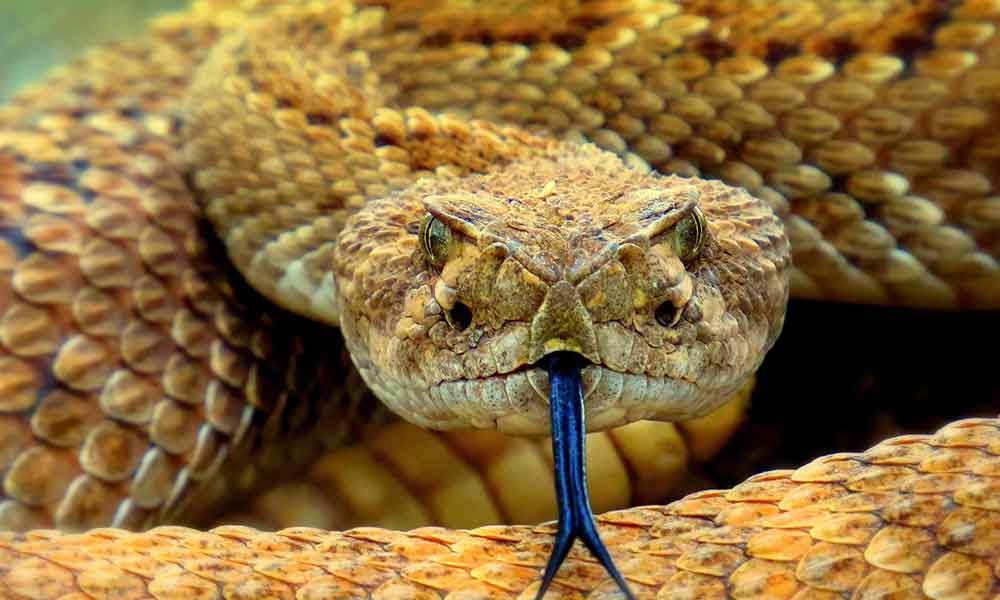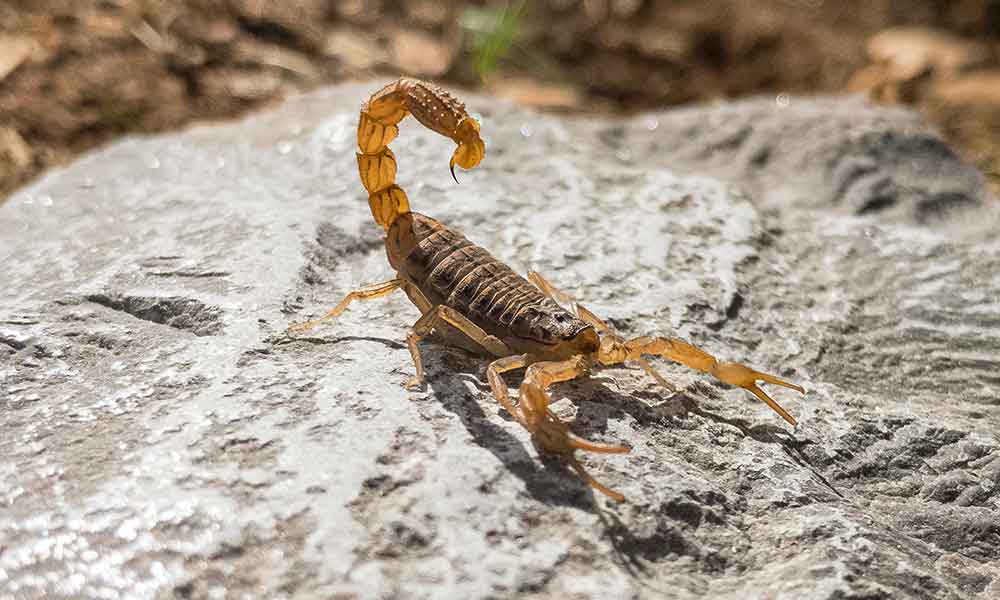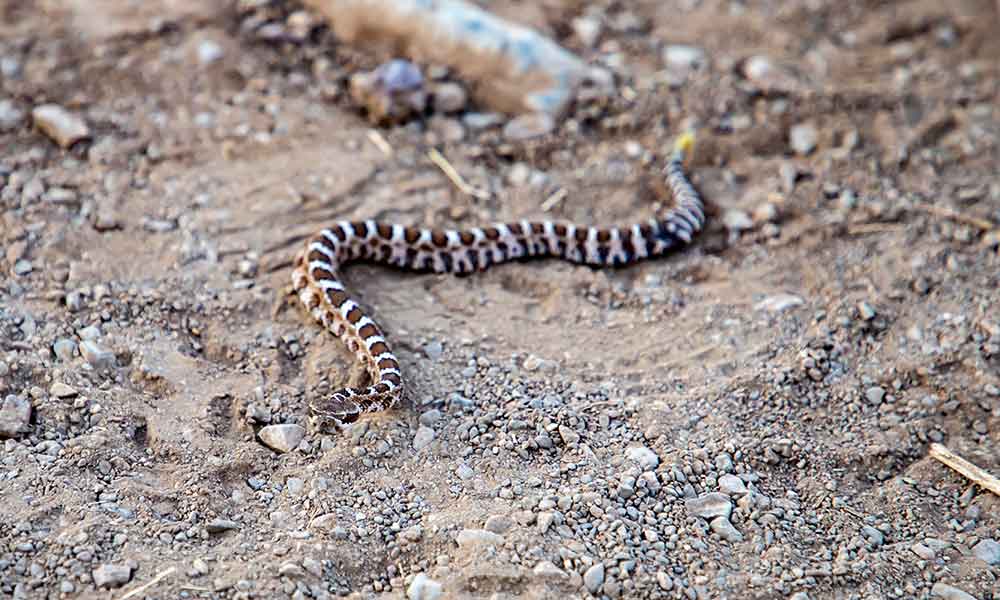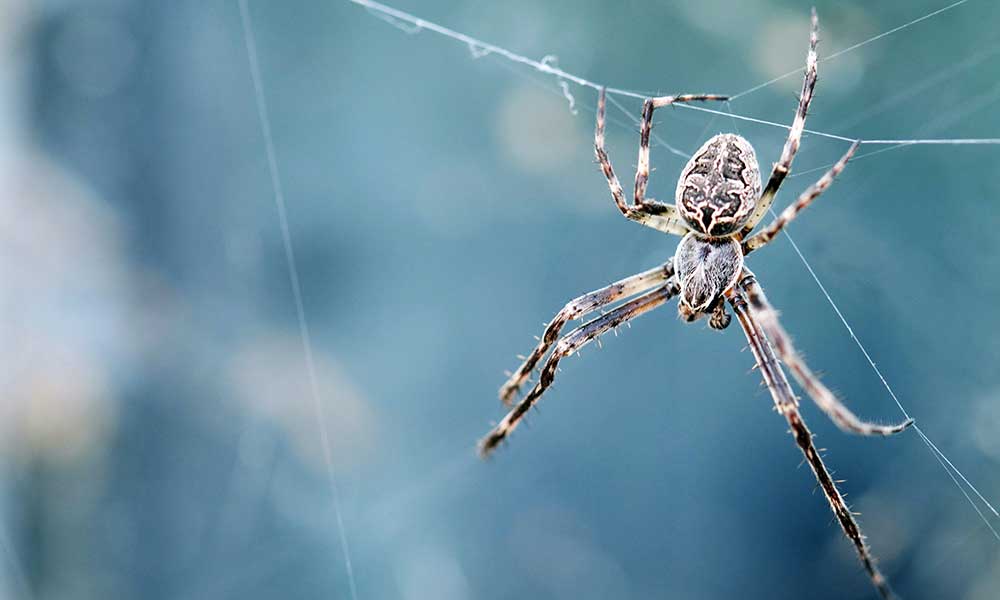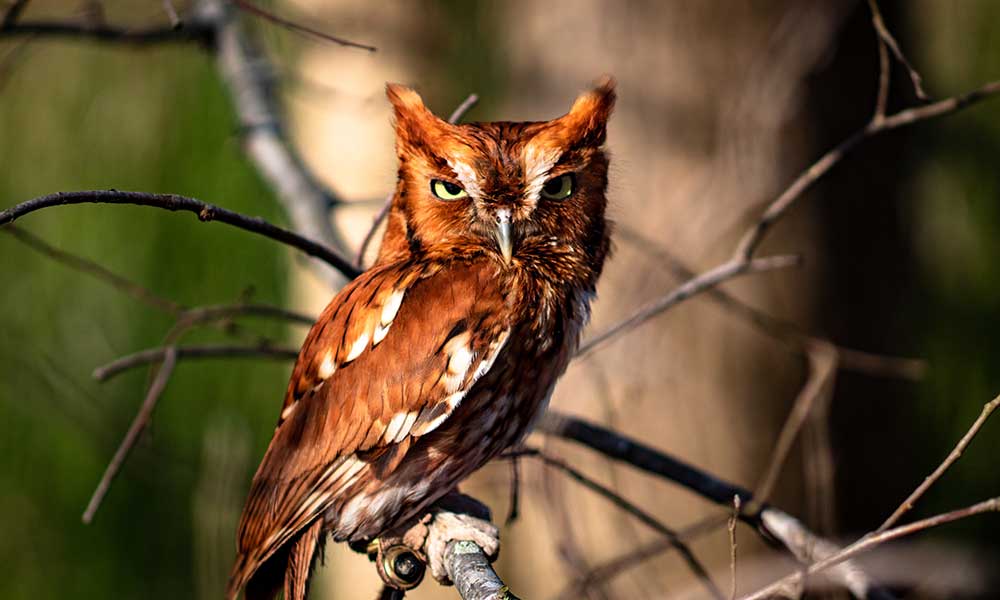Rattlesnakes come from the genus Crotalus (pit vipers) and are native to the Americas. There are 36 known species and as many as 70 subspecies, and these are spread across North America, Central America, and South America.
In the following guide, we’ll look at the many pit viper species that you can encounter in North America, including a guide to all the species and a state-by-state list of where they can be found.
What are the Types of Rattlesnakes in North America?
There are over a dozen species of rattlesnakes in North America, including all of the following fascinating creatures:
Timber Rattlesnake (Crotalus horridus)
The timber rattlesnake or “crotalus horridus” is one of the most common rattlesnake species in the United States. This pit viper lives in woodlands across multiple states and weighs around 3 lbs. on average.
Tiger Rattlesnake (Crotalus tigris)
The tiger rattlesnake lives in rocky areas and arid scrublands. It feeds on small mammals and lizards and while it’s not considered vulnerable or threatened, it is widely hunted for its skin. This skin is then sold in souvenir shops across the southwestern US.
Eastern Diamondback Rattlesnake (Crotalus adamanteus)
The eastern diamondback rattlesnake weighs an average of 34 lbs., making it one of the largest venomous snakes in the world. It is named for the diamond pattern that runs along its back and has very deadly venom.
Eastern diamondback rattlesnake bites can be deadly. It is considered to be one of the most venomous snakes in the United States.
Western Diamondback Rattlesnake (Crotalus atrox)
The western diamondback thrives in desert regions, including the southwestern United States. It feeds on jackrabbits, prairie dogs, and other small and medium-sized mammals and has diamond-shaped markings on its body.
Sidewinder Rattlesnake (Crotalus cerastes)
Also known as the horned rattlesnake, this species lives in the southwestern United States, as well as parts of Mexico. Its name comes from its “sideways” shifting across the sands and for its unique horns, which are thought to protect the snake’s eyes.
Santa Catalina Rattlesnake (Crotalus catalinensis)
This snake species lives on Isla Santa Catalina and while it has a rattle, it doesn’t make a sound. The Santa Catalina rattlesnake is considered critically endangered, with numbers rapidly declining.
Mexican West Coast Rattlesnake (Crotalus basiliscus)
As the name suggests, the Mexican west coast rattlesnake lives along the west coast of Mexico. It thrives in grasslands and produces a potent venom.
Arizona Black Rattlesnake (Crotalus cerberus)
The Arizona black rattlesnake lives exclusively in the state of Arizona. It has a distinctive black coloration, with a few white stripes. It can also change its color.
The Arizona black rattlesnake is thought to be very rare, but it is difficult for researchers to study this creature as it lives in remote parts of the state.
Prairie Rattlesnake (Crotalus viridis)
The prairie rattlesnake is located throughout North America, with its range stretching from Canada to Mexico. It can climb trees for shelter but spends most of its time hiding in the grass and brush.
Middle American Rattlesnake (Crotalus simus)
Also known as the northwestern neotropical rattlesnake, this is one of the most venomous serpents in North America. It lives in southern parts of Mexico and can also be found in Central America.
Western Rattlesnake (Crotalus oreganus)
The Western rattlesnake usually has a pale, tan, red, or brown coloration with dark blotches on the neck and bands closer to the tail.
It can be found in many parts of the United States and Canada. These dangerous snakes can offload as much as half of their venom in a single bite.
The Grand Canyon rattlesnake is a subspecies of the Western rattlesnake.
Ridge-Nosed Rattlesnake (Crotalus willardi)
The ridge-nosed rattlesnake is a small species that lives in parts of New Mexico, Arizona, and Mexico. It is the state reptile of Arizona.
Panamint Rattlesnake (Crotalus stephensi)
The Panamint rattlesnake is a desert-dwelling snake that lives in parts of Nevada and Death Valley. It was formerly considered to be a subspecies of the speckled rattlesnake but is not recognized as a distinct species.
Mojave Rattlesnake (Crotalus scutulatus)
Mojave rattlesnake venom is very potent, making this desert-dweller a dangerous creature. Its venom can cause all kinds of muscle, neurological, and respiratory issues, but bites are uncommon and an effective anti-venom exists, so deaths are rare.
Red Diamond Rattlesnake (Crotalus ruber)
The red diamond rattlesnake is a large serpent that lives in Baja California. It has a diamond pattern on its body.
Baja California Rattlesnake (Crotalus enyo)
The Baja California rattlesnake can be found in south and central Baja California, where it lives alongside the red diamond rattlesnake.
Great Basin Rattlesnake (Crotalus lutosus)
As its name suggests, the Great Basic rattlesnake lives throughout the Great Basin, including California, Utah, Nevada, Idaho, and Arizona.
Pygmy Rattlesnake (Sistrurus miliarius)
The pygmy rattlesnake is a very small species that typically grows to no more than 24 inches in length. It has a highly toxic venom, but the small size of the animal means it doesn’t produce enough to cause serious harm.
Massasauga (Sistrurus catenatus)
“Massasauga” is a Native American word meaning “great river-mouth”. There are three subspecies, the Eastern massasauga, Western massasauga, and desert massasauga.
What is the Most Common Rattlesnake in North America?
The timber rattlesnake is the most common species in North America. Also known as the canebrake rattlesnake or the banded rattlesnake, it was first described back in 1758.
Despite being a very common species in North America, the timber rattler is considered a near-threatened species in parts of the United States, including Massachusetts, New Jersey, Virginia, New Hampshire, and Vermont.
What’s the Difference Between a Timber Rattlesnake and a Diamondback Rattlesnake?
The timber rattlesnake is much smaller than the diamondback and doesn’t have the distinctive diamond-shaped markings for which the diamondback is named.
What is the Largest Rattlesnake in North America?
The Eastern diamondback rattler is the largest rattlesnake species in North America. It has been known to reach 8 feet in length and to weigh as much as 10 pounds.
What is the Difference Between an Eastern and Western Diamondback Rattlesnake?
Eastern diamondbacks have darker patterns than western diamondbacks. They also live in eastern parts of the United States whereas the Western diamondback thrives in the southwest.
Which States Have Rattlesnakes?
You can find species of rattlesnake in most states, but some are more common than others.
Here is a state-by-state rundown of rattlesnake species in the US:
- Alabama: Timber rattlesnakes exist throughout the state and the eastern diamondback rattlesnake is also located in the southern parts of Alabama.
- Alaska: The northernmost state is too cold for rattlesnakes and so you won’t bump into any of them here.
- Arizona: There are more species of rattlesnake in Arizona than in any other state. The climate and varied terrain of the Copper State is perfect for them.
- Arkansas: Pygmy rattlesnakes, western diamondback rattlesnakes, and timber rattlesnakes live in Arkansas.
- California: There are several rattlesnake species in California, with western diamondbacks and sidewinders in the south and northern Pacific rattlesnakes in the north.
- Colorado: You will find prairie rattlesnakes, desert massasaugas, and western rattlesnakes in Colorado.
- Connecticut: In the past, there were many rattlesnakes in Connecticut, but towns placed bounties on them, huge numbers were killed, and they are now very rare.
- Delaware: You likely won’t encounter any rattlesnakes in Delaware.
- Florida: Most rattlesnakes in Florida are eastern diamondback rattlesnakes, which live throughout the Sunshine State. Other species can also be found here.
- Georgia: The timber rattlesnake is a fairly common sight in the Peach State.
- Hawaii: There are no native species of rattlesnakes in Hawaii and the laws against snake ownership ensure that none are introduced.
- Idaho: Although there are very few species of rattlesnake in Idaho, you may encounter some Western rattlesnakes.
- Illinois: Timber rattlesnakes exist in Illinois, but numbers are dwindling. The Eastern massasauga also exists in southern regions.
- Indiana: The Eastern massasauga and timber rattlesnake both live in Indiana.
- Iowa: Timber rattlesnakes live in Iowa. There are also other species closer to the borders.
- Kansas: Both the massasauga and the timber rattlesnake call Kansas home.
- Kentucky: Timber rattlesnakes are common in much of Kentucky, although you won’t find many (or any) of these snakes around Frankfort.
- Louisiana: There are several species of rattlesnake in Louisiana.
- Maine: There are none of these snakes in Maine and that has been the case for many decades.
- Maryland: Sightings of rattlesnakes are very rare in Maryland.
- Massachusetts: Populations are very low and sightings are rare.
- Michigan: The Eastern massasauga is the only rattlesnake in Michigan and the numbers are very low.
- Minnesota: Rattlesnakes are rare in Minnesota and as the numbers drop, sightings are becoming even rarer.
- Mississippi: Several species of rattlesnake live in Mississippi and can be found throughout the state.
- Missouri: Although these snakes are regularly sighted in Missouri, they are not as common as they once were.
- Montana: The prairie rattlesnake is the only venomous snake in Montana and lives in the state’s foothills.
- Nebraska: Western massasaugas are endangered in Nebraska, but timber rattlesnakes are relatively common. Prairie rattlesnakes are also in the Cornhusker State.
- Nevada: The Mojave rattlesnake, sidewinder rattlesnake, and the Great Basin rattlesnake all call this state home.
- New Hampshire: The state of New Hampshire is the furthest east that you can find timber rattlesnakes.
- New Jersey: Timber rattlesnakes are the only rattlesnakes in New Jersey, but their numbers are small and they are considered endangered here.
- New Mexico: The climate and terrain of New Mexico are perfect for these snakes and many species live here.
- New York: Sightings of rattlesnakes are rare in New York and most are in the western part of the state.
- North Carolina: The pygmy rattlesnake and Eastern diamondback rattlesnake reside in NC. You may also see timber rattlesnakes here.
- North Dakota: The prairie rattlesnake lives here, but sightings are rare as it’s a little too cold.
- Ohio: The south-central and north-central parts of Ohio are home to a small number of rattlesnakes.
- Oklahoma: These snakes are most common in southern parts of Oklahoma.
- Oregon: Several subspecies of the Western rattlesnake live in Oregon, including the Great Basin rattlesnake and the Northern Pacific rattlesnake.
- Pennsylvania: Rattlesnake numbers are declining in PA, but you can still encounter them in Pittsburgh, Harrisburg, and the Appalachian Mountains.
- Rhode Island: It is thought that a small population of timber rattlesnakes still reside in Rhode Island.
- South Carolina: Several species of rattlesnakes live in SC.
- South Dakota: The prairie rattlesnake is the only one you can expect to encounter here, but the numbers are very low.
- Tennessee: Pygmy rattlesnakes exist in small numbers while timber rattlesnakes are more common.
- Texas: Many venomous snakes call Texas home, including several species of rattlesnake.
- Utah: Sidewinders live in southern parts of Utah, with Western rattlesnakes and speckled rattlesnakes elsewhere.
- Vermont: A small number of timber rattlesnakes may reside in Vermont.
- Virginia: Both timber rattlesnakes and Eastern diamondbacks live in Virginia.
- Washington: There are a small number of both Western rattlesnakes and timber rattlesnakes in the state of Washington.
- West Virginia: The Appalachian Mountains are home to timber rattlesnakes and this species also exists in other parts of the state.
- Wisconsin: Both the Eastern massasauga and the timber rattlesnake have made their homes in Wisconsin.
- Wyoming: The midget-faded rattlesnake is relatively common here. This Western rattlesnake subspecies live in different areas from the prairie rattlesnake, which also lives in Wyoming.
Why Are Some Snake Species Threatened?
Habitat destruction is one of the biggest threats to snakes in North America. Climate change and urban development have made it difficult for these creatures to nest and avoid predators. They are also hunted for their meat, skin, rattles, and the exotic pet trade. Like all animals, snakes also have to contend with disease, including snake fungal disease.
Snakes might not seem very useful, but they form an essential part of the ecosystem. They feed on rodents and small mammals, thus helping to reduce the number of rats and mice that could otherwise damage crops, spread disease, or upset the natural order.

